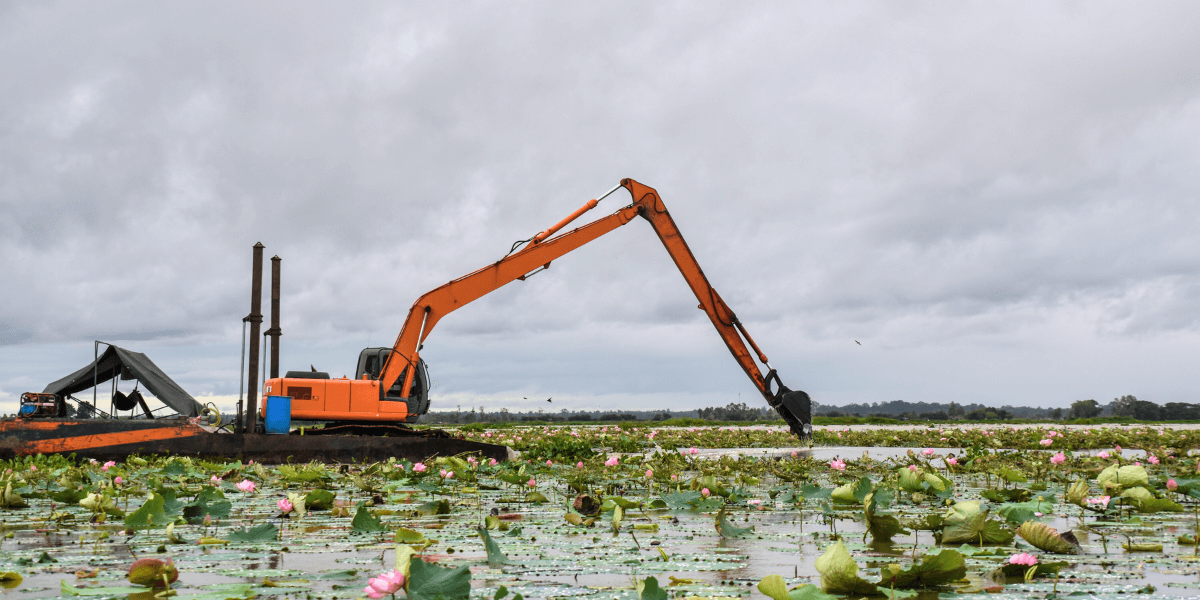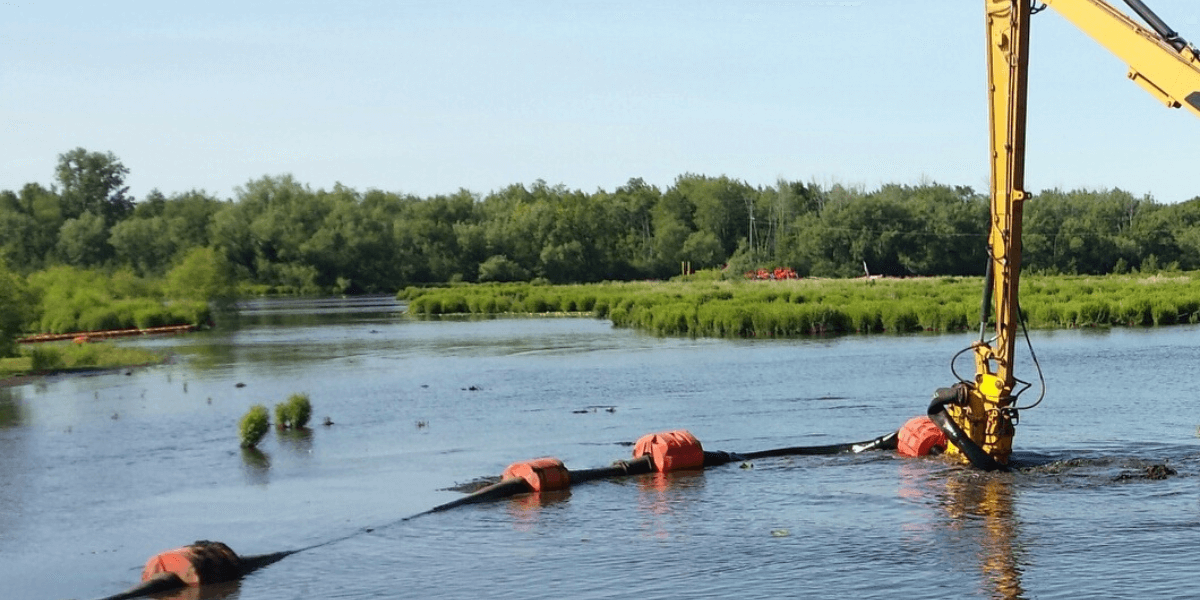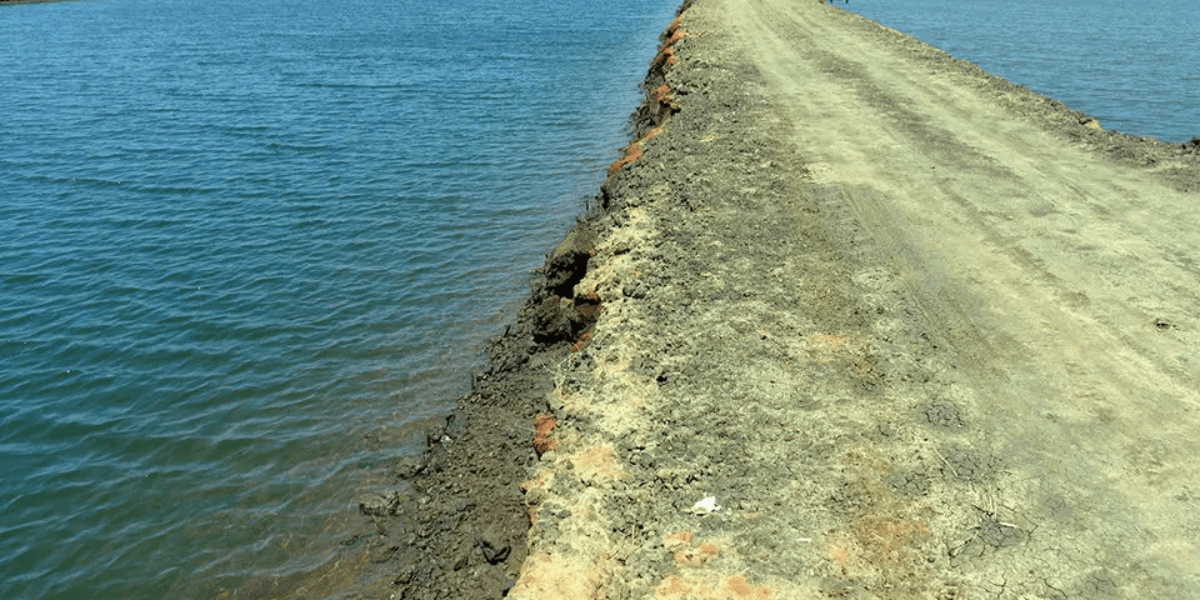1 min read
The Importance Of Dredging
When most people think of dredging, they picture heavy equipment scooping sediment from the bottom of a river or harbor. And while that's part of the...

Living near a body of water may raise concerns about dredging operations and their impact on property values and the ecosystem. Dive into this comprehensive blog to learn about the purpose, effects, and potential benefits of dredging. Discover how responsible practices can contribute to a cleaner, healthier planet while protecting your property and the environment.
If you live near a body of water, you might have concerns about proposed dredging operations. What do such projects entail? How might they affect your property value and what is the impact on the ecosystem?
Although the word sounds like a scary construction technique, it’s similar to what humans do on land. The primary difference is it takes place in aquatic environments. However, the nature of water means that what happens in one area creates a ripple effect elsewhere, so it’s essential to know the impact of such operations.

Dredging refers to removing sediments and debris from the bottom of lakes, rivers and harbors. It also affects ocean waters, as the flow of sand and silt downstream gradually fills crucial transportation channels. In that respect, it’s not much different from using a bulldozer to smooth down a patch of land to prepare it for building.
One primary purpose of dredging is to allow for ship traffic. For example, the St. Lawrence Seaway connects the Atlantic Ocean with the Great Lakes, allowing ships to deliver goods along multiple inland ports. Ocean-going vessels have low bottoms and dredging can enlarge waterways to let them pass further inland.
Navigation is only one purpose of dredging. Another reason is to allow for the placement of structures such as foundations and pipelines. For certain types of infrastructure installation, horizontal directional drilling (HDD) can be an alternative method to dredging. HDD enables the installation of pipelines or cables underground with minimal disruption to the surrounding environment. This technique is particularly beneficial in areas where traditional dredging may be challenging or cause unnecessary surface disruption, making HDD an effective solution for precise and environmentally conscious infrastructure projects.
Finally, dredging can help flood control by giving the water a place to go away from people’s homes, protecting human life and property.
Occasionally, dredging seeks to remedy environmental catastrophes. For example, restoration experts used dredged materials to rebuild Louisiana’s coastline over a decade after the BP oil spill disaster decimated the Gulf of Mexico.
People often associate dredging with pollution, contaminated soils and carbon emissions. While any human construction projects incur environmental costs, it’s arguable that the improvements outweigh the price.
For example, consider hard-to-reach areas such as Alaska. Although much of the state has inaccessible roads during parts of the year, it has plenty of coastlines. On average, road freight emits 100 times as much carbon as ships carrying the same amount of cargo the same distance. Dredging additional ports can reduce the environmental costs of delivering goods to these regions while keeping humans safer.
Once these goods reach the interior, other technologies take over. For example, trolley-assisted transport reduces carbon emissions by 60% while reducing the risks of trucks skidding off icy cliffs.
However, other environmental costs of dredging are more challenging to refute. For example, dredging can harm various animals, from the smallest species to the largest. Consider some of the adverse effects:
Noise: Although the noise from modern operations is unlikely to damage the hearing of marine animals, it may create behavioral changes. Furthermore, noise can disrupt the predator-prey relationship.
Habitat degradation and contaminant remobilization: Dredging operations disrupt habitats, especially in spawning areas. Furthermore, they can stir up contaminants buried in soil beds, affecting animal reproduction and behavior.
Fortunately, these effects are short-lived when those performing dredging operations plan carefully and follow established protocols. Problems arise when officials don’t enforce laws and regulations and companies seek workarounds. A properly executed dredging operation can increase food sources and support local flora and fauna.
To understand the impact of dredging on ecosystems, it helps to use your home as an analogy. If a bulldozer razed your house to the ground, you’d experience some suffering and hardship. However, you could quickly recover from the impact if the construction company secured you alternative lodging while they built a new structure to replace your condemned property.
The same can happen with dredging. For example, those who live along the coast often find that saltwater causes the following problems:
Broken down HVAC systems
Damaged siding and stone
Wood rot and mold
Remedying these issues often requires dredging to remove built-up sediment and debris and replace existing structures. Say you have a struggling colony of rock lobster off your stony shores. Contaminants from decaying materials can poison area wildlife — including your crustacean friends — leading populations to slowly diminish.
However, a well-run dredging operation that doesn’t upset females and their eggs removes these contaminants. The lobster population can eventually rebuild stronger and healthier than before.
Occasionally, dredging occurs to remove contaminants from area waterways. This environmental dredging can restore coastal areas, but what happens to the contaminated sediment and other material once you remove it from one place? After all, it has to go somewhere.
Currently, four disposal methods exist, although researchers continue to improve waste management practices.
In this method, dredgers bring materials to a predetermined aquatic disposal site without any type of treatment. Once they release the materials, they cover them with a cap to protect against further environmental degradation. Even so, some contaminants are left in the water column from the removal site and disposal location, which can impact the ecosystem.
This method employs dikes built above the water level surface, filled with the material to protect the surrounding water. This structure might contain a pipe to distribute dredged material throughout the disposal site or be roomy enough to allow traditional earth-moving equipment.
Some dredgers treat the material after dewatering as solid waste suitable for a traditional landfill. The problem with this disposal method is it takes up land people could use for other purposes, such as agriculture.
When properly treated, people can use dredged material as fill for parks and recreation areas, reclaiming strip-mine operations and developing commercial real estate. What use it is best suited for depends on the content of the dredged material. For example, soil high in iron and copper should not be used where it can leak into nearby water supplies but works upland.
These fluids must be moved, filtered, and recirculated efficiently and are often done with the help of centrifugal pumps and other fluid handling equipment. Reliable pump systems ensure that dredging operations stay on schedule and that environmental standards are maintained during sediment transport.
Dredging will continue and may expand in the coming years. For example, experts project seas will rise by over half a meter thanks to climate change. This shift will necessitate more remediation in coastal areas with building operations abutting the shoreline.
Therefore, it’s crucial to know the facts about dredging. Although it can contribute to ecosystem destruction, it can also play a vital role in remedying the problems brought on by humankind.
Many people recoil when they hear the word “dredging,” thinking it must lead to environmental destruction. However, it’s no different than clearing land for construction and when done right, it can protect sensitive ecosystems.
Now that you understand the impact of dredging on our ecosystem, you’re better able to take action. Urge officials to maintain careful oversight of dredging operations so their actions lead to a cleaner, healthier planet.
How Dredging Helps With Water Management - Here's more information on how dredging can help with water management.
U.S. Aqua Services was created to support the dredging process in advancing commerce and responding to its many challenges. To accomplish this, our dredging company assembled an exceptional group of experienced individuals and a diverse inventory of dredge equipment and excavator dredge pumps.
We offer dredging equipment rental services so you can have access to the latest and greatest in dredging technology without having to pay to maintain it, transport, and store it, along with dewatering services.
With an emphasis on mobility, dependability, durability, diversity, efficiency, and safety, our dredging rental company can ensure that our different types of dredging systems are easy to move through any terrain and can work in the most rugged and remote environments. Our multi-function hydraulic systems are built with jetting and mechanical options that can efficiently move loose sediment or stiff layers of clay.
US Aqua services also and maintains a ready fleet of amphibious equipment capable of completing dredging projects in some of the harshest and most remote environments. U.S Aqua is also the dealer for Louisiana of the amphibious vehicle Fat Truck. No matter the size or scope of the job or the remoteness of your work location, you can rely on Fat Truck’s industrial off-road utility vehicles to get the job done right.

1 min read
When most people think of dredging, they picture heavy equipment scooping sediment from the bottom of a river or harbor. And while that's part of the...

There was a time when waterways were navigable, beaches pristine, and ecosystems thrived without intervention—but today, ensuring these conditions...
One of the most pressing global concerns right now is access to clean, potable water. It’s evident in places like South Africa, where entire cities...